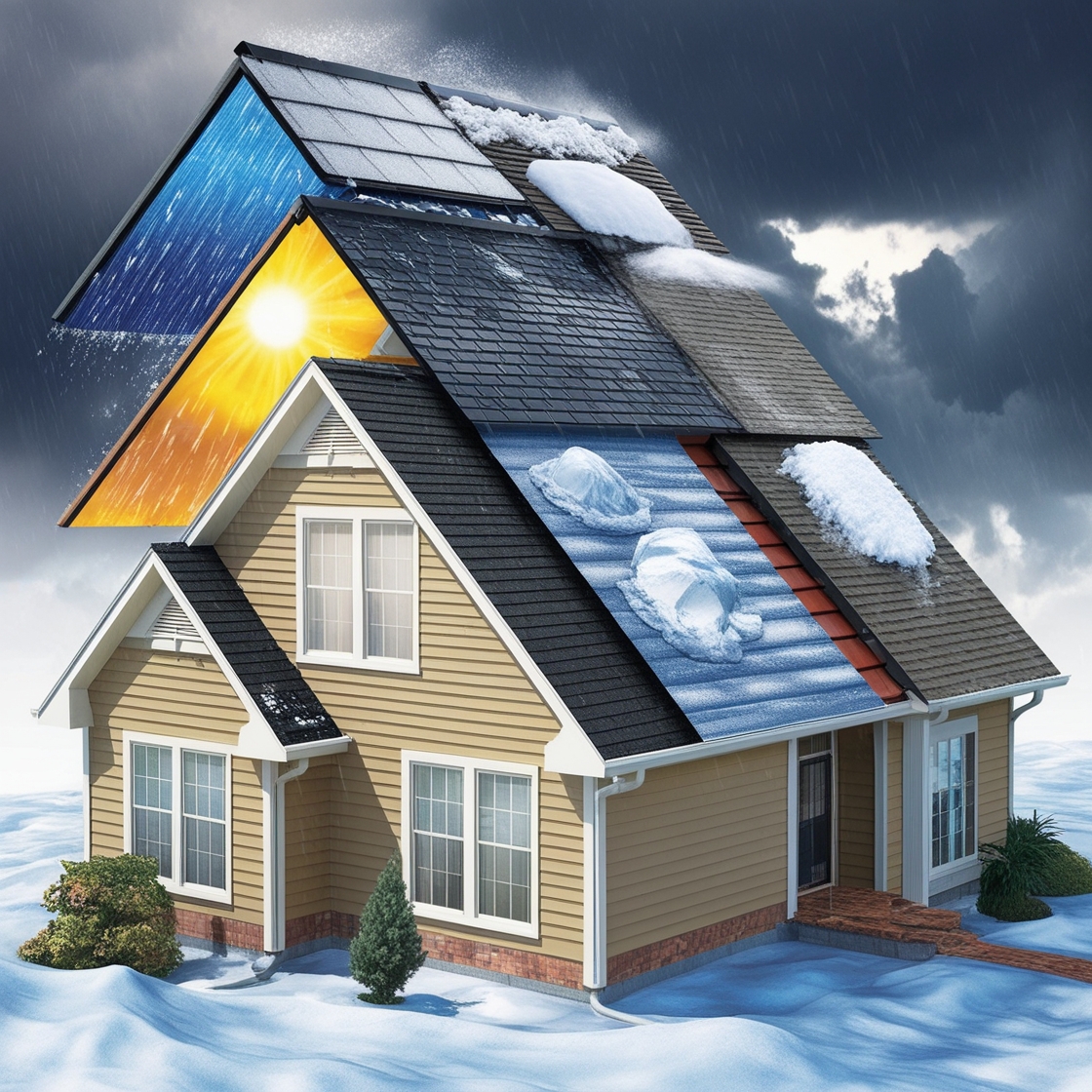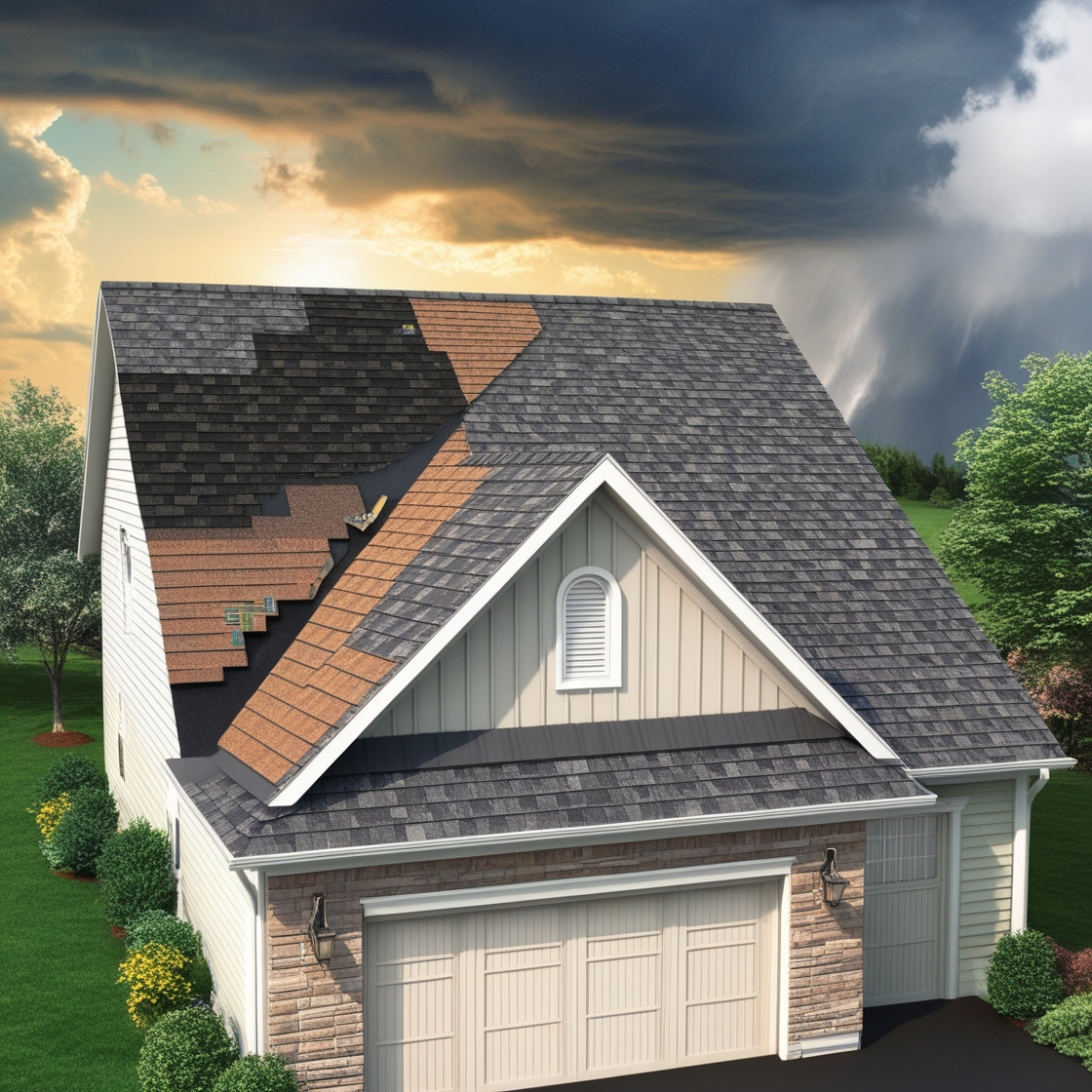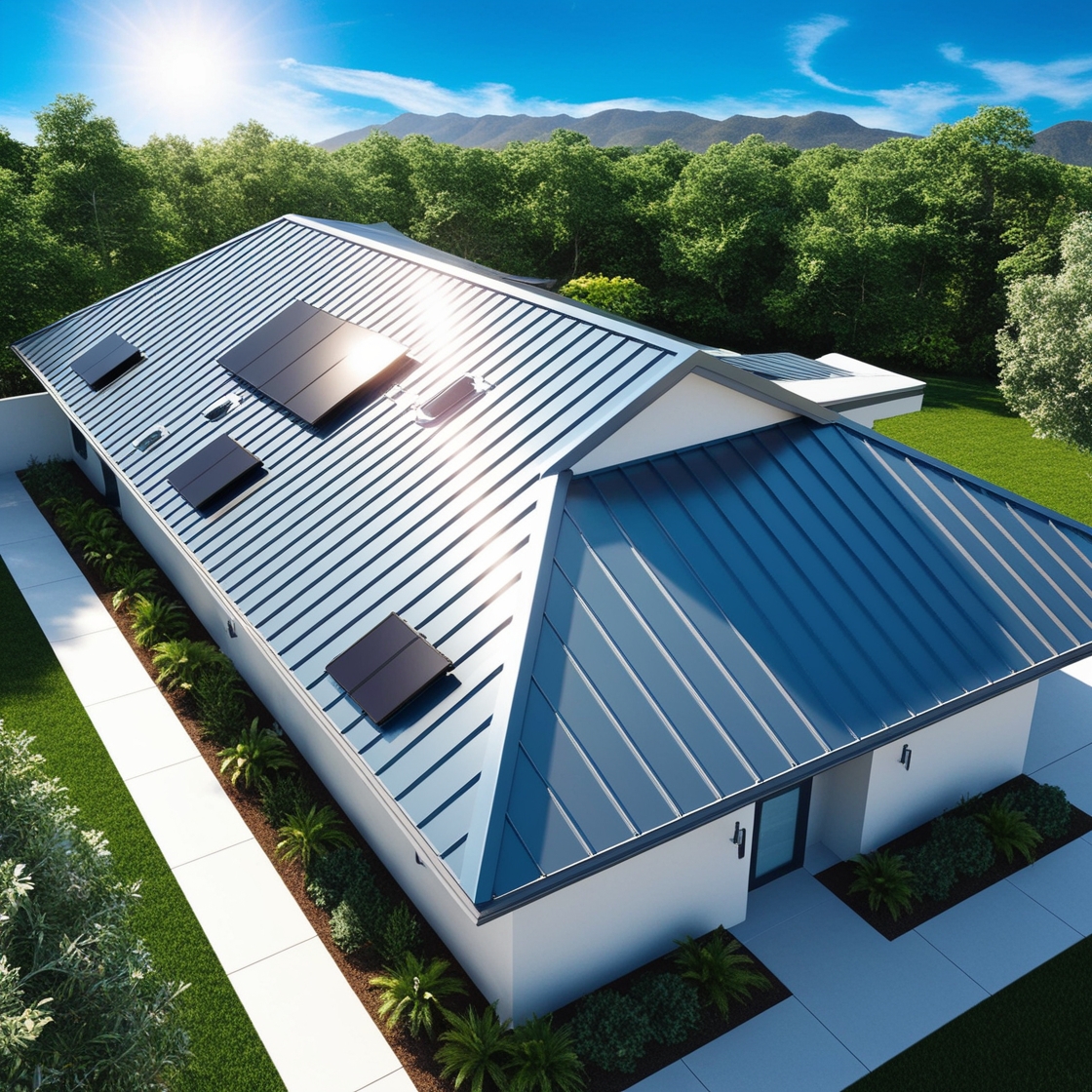The roof is one of the most critical components of any building, providing protection from the elements and ensuring the structural integrity of the property. However, like any other part of a home, a roof’s lifespan is influenced by various factors, with weather being one of the most significant. Understanding how different weather conditions impact your roof can help you take preventive measures to extend its longevity and maintain the safety and comfort of your home.
1. Sun Exposure
Impact on Roof Lifespan: Sun exposure is one of the primary factors that can affect the longevity of your roof. Ultraviolet (UV) rays from the sun can cause roofing materials to deteriorate over time. This is especially true for asphalt shingles, which can become brittle, crack, and lose their protective granules under constant exposure to the sun’s harsh rays.
Preventive Measures: To mitigate sun damage, consider installing reflective or cool roofing materials that deflect sunlight rather than absorb it. These materials can significantly reduce heat buildup and extend the lifespan of your roof. Regular inspections and maintenance, such as replacing damaged shingles, can also help prevent long-term sun-related wear and tear.
2. Rain and Moisture
Impact on Roof Lifespan: Rain is a common weather element that roofs must endure, but excessive moisture can lead to significant issues. Prolonged exposure to rain can cause water infiltration, leading to leaks, mold growth, and even structural damage. In areas with high humidity or frequent rainfall, the risk of water damage is even greater, as moisture can seep into small cracks or gaps in the roofing material.
Preventive Measures: Proper installation and maintenance of your roof are crucial in preventing water damage. Ensuring that your roof has adequate drainage systems, such as gutters and downspouts, can help redirect water away from the roof and foundation. Regularly inspecting and sealing any gaps, cracks, or seams in the roof can also prevent moisture from penetrating the underlying structure.
3. Snow and Ice
Impact on Roof Lifespan: In colder climates, snow and ice can pose significant challenges to a roof’s lifespan. The weight of accumulated snow can strain the roof’s structure, especially if the roof is not designed to handle heavy loads. Additionally, the freeze-thaw cycle, where snow melts and refreezes, can cause ice dams to form. Ice dams occur when melting snow refreezes at the roof’s edge, preventing proper drainage and causing water to back up under the shingles, leading to leaks and potential damage.
Preventive Measures: To protect your roof from snow and ice damage, ensure that your attic is properly insulated and ventilated to prevent uneven heating of the roof, which contributes to ice dam formation. Removing excess snow from the roof using a roof rake or hiring a professional service can also prevent excessive weight and ice buildup. Installing heat cables along the roof’s edge can help melt ice and snow, promoting proper drainage.
4. Wind
Impact on Roof Lifespan: Wind can be a destructive force, particularly in regions prone to hurricanes, tornadoes, or strong storms. High winds can lift and tear off shingles, leaving the underlying roof structure exposed to the elements. Even moderate winds can cause gradual wear and tear on roofing materials, leading to loosened shingles and weakened areas that are more susceptible to leaks.
Preventive Measures: Selecting wind-resistant roofing materials and ensuring they are properly installed can greatly reduce the risk of wind damage. Asphalt shingles with a higher wind rating, metal roofing, and clay or concrete tiles are all good options for wind-prone areas. Regular inspections after storms and prompt repairs of any damaged areas can help maintain the integrity of your roof and prevent wind-related issues from worsening.
5. Hail
Impact on Roof Lifespan: Hailstorms can cause immediate and visible damage to a roof. Hailstones can crack or puncture shingles, dent metal roofing, and break tiles. Even small hailstones can dislodge the protective granules on asphalt shingles, reducing their effectiveness and shortening their lifespan.
Preventive Measures: To protect against hail damage, consider installing impact-resistant roofing materials that are specifically designed to withstand hail. These materials are typically more durable and less likely to crack or break under impact. After a hailstorm, it’s important to have your roof inspected by a professional to assess any damage and make necessary repairs before they lead to more serious issues.
6. Temperature Fluctuations
Impact on Roof Lifespan: Temperature fluctuations, especially those that occur rapidly, can cause roofing materials to expand and contract. Over time, this process can lead to cracks, splits, and other forms of damage, particularly in materials like asphalt shingles and wood shakes. In areas where temperatures swing dramatically between day and night or between seasons, the effects can be more pronounced.
Preventive Measures: Choosing roofing materials that are designed to withstand temperature variations can help mitigate this type of damage. For example, metal roofing and clay tiles are more resistant to temperature-related wear and tear. Regular maintenance and inspections are also essential in catching early signs of damage before they develop into more serious issues.





